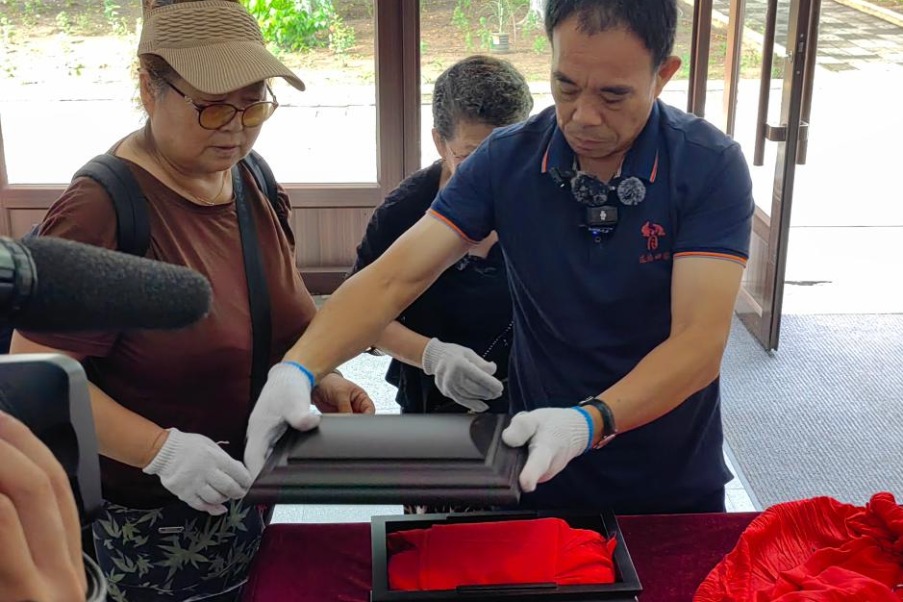Chinese researchers develop movable electrode for more advanced brain-computer interfaces

BEIJING -- A team of Chinese scientists has developed a new, soft and movable implantable electrode that could overcome some of the biggest challenges holding back brain-computer interfaces.
The study, led by researchers from the Shenzhen Institutes of Advanced Technology (SIAT) under the Chinese Academy of Sciences and Donghua University, which is located in Shanghai, was recently published in the journal Nature.
According to the study, most neural implants rely on rigid, static electrodes that remain fixed once surgically placed. This immobility severely limits their performance -- they can only capture signals from a single site, while neural and muscular activities often shift across time and space. As a result, important information may be missed, and the overall quality of monitoring gradually declines.
If researchers or clinicians wish to adjust an electrode's position to locate stronger or more relevant signals, additional invasive surgery is usually required -- which results in new risks and further burdens for patients. These challenges have restricted both the adaptability and long-term use of brain-computer interfaces.
The new device developed by the Chinese team, named NeuroWorm, represents a radical shift. Inspired by the flexible movement and segmented body of an earthworm, it is a soft, thread-like fiber roughly twice the width of a human hair. Despite its tiny size -- it can carry up to 60 individual sensors along its length.
A key innovation is its ability to move after being implanted. A small magnetic tip attached to NeuroWorm allows researchers to wirelessly steer it through brain tissue or along muscles using external magnetic fields. This means a single implant can actively explore different areas to find the best signals -- instead of being stuck in one place.
In experiments, the team guided NeuroWorm through a rat's leg muscle via a very small incision. They used magnets to move it each day for a week -- and it successfully recorded clear and stable muscle signals from different locations. In another test, a single NeuroWorm implanted in a rat for over 43 weeks continued to work perfectly, with minimal scar tissue formation compared to traditional rigid devices. The team also steered the device deep into a rabbit's brain, capturing high-quality neural signals along the way.
This breakthrough offers a path toward more dynamic and less invasive bioelectronic interfaces, said Liu Zhiyuan, a professor at the SIAT.
The NeuroWorm platform could lead to smarter, longer-lasting and more effective applications in areas like advanced prosthetics, the mapping of brain activity for epilepsy, and managing chronic neurological diseases, Liu added.
- Chinese researchers develop movable electrode for more advanced brain-computer interfaces
- China launches construction of high-precision telescope project on 'roof of the world'
- South China city reports over 1,700 Chikungunya cases
- Xinjiang starts building new expressway linking north and south
- Intl tourists captivated by traditional opera gala in Kunshan
- Training and transport jets showed at Changchun air show




































